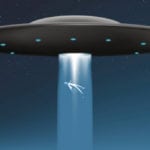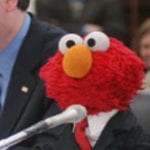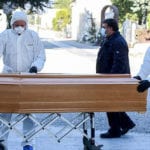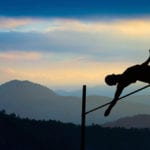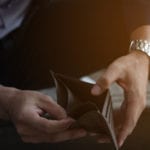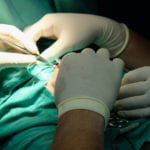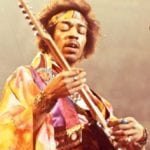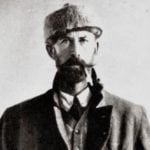 Weird Stuff
Weird Stuff  Weird Stuff
Weird Stuff  Mysteries
Mysteries 10 Tragic Disappearances and Deaths in Joshua Tree National Park
 History
History 10 Ways Childhood Really Sucked in the Old West
 Music
Music 10 Name Origins of Famous Bands from the 1990s
 Religion
Religion 10 Biggest Turnarounds by the Catholic Church
 Weird Stuff
Weird Stuff 10 Unbelievable Times Laws Had Unintended Consequences
 Humans
Humans Ten Historic Women Who Deserve Way More Credit Than They Got
 Movies and TV
Movies and TV 10 Films That Spawned Major Lawsuits
 History
History Ten Times Towns Were Wiped Off the Face of the Earth
 Creepy
Creepy 10 of the Most Disturbingly Haunted Public Houses in the UK
 Weird Stuff
Weird Stuff 10 Niche Subcultures That Are More Popular Than You Might Think
 Mysteries
Mysteries 10 Tragic Disappearances and Deaths in Joshua Tree National Park
 History
History 10 Ways Childhood Really Sucked in the Old West
Who's Behind Listverse?

Jamie Frater
Head Editor
Jamie founded Listverse due to an insatiable desire to share fascinating, obscure, and bizarre facts. He has been a guest speaker on numerous national radio and television stations and is a five time published author.
More About Us Music
Music 10 Name Origins of Famous Bands from the 1990s
 Religion
Religion 10 Biggest Turnarounds by the Catholic Church
 Weird Stuff
Weird Stuff 10 Unbelievable Times Laws Had Unintended Consequences
 Humans
Humans Ten Historic Women Who Deserve Way More Credit Than They Got
 Movies and TV
Movies and TV 10 Films That Spawned Major Lawsuits
 History
History Ten Times Towns Were Wiped Off the Face of the Earth
 Creepy
Creepy 10 of the Most Disturbingly Haunted Public Houses in the UK
Top 10 Witnesses Who Died Suddenly
A witness is someone who has firsthand knowledge about an event. An expert witness is a person who, by virtue of education, training or experience, is believed to have expertise in a particular area. A different type of witness is an eyewitness, who is a person that saw a specific event first hand. A witness can be extremely important for court proceedings. They are vital for news articles that expose government secrets. In some cases, investigative journalists can become an expert witness after conducting deep research into a controversial subject. This article will examine ten famous witnesses that suddenly died. In every case, the deaths are suspicious and have spawned a collection of conspiracy theories.

Witnessed Event: U.S. Response to September 11, 2001
On September 11, 2001, David Wherley Jr. was the commander in charge of the 113th Fighter Wing at Andrews Air Force base, in Maryland. After the attack on New York City he took orders from the Secret Service to dispatch a fleet of aircraft to protect the White House and the Capitol. Wherley was an important 9/11 witness. He played a role in ordering the tactics used by the U.S. government in response to the terrorist activity. Wherley was mentioned on multiple occasions in the 9/11 Commission report. He later acted as the commanding general of the District of Columbia National Guard, from 2003 to 2008.
On June 22, 2009, David Wherley and his wife Ann boarded a Red Line Washington Metro train (#214) in Northeast Washington, D.C. While waiting for their train to leave Fort Totten station, it was struck by an oncoming Red Line train. The Wherley’s train was rear-ended at a high speed. Nine people were killed in the accident, including David Wherley and his wife. It was the deadliest crash in the history of the Washington Metro. Several survivors were trapped in the rubble for hours, and approximately 80 people were injured.
A preliminary investigation found that the accident occurred when the replacement of a track circuit component failed, which prevented certain signals from being reported. Survivors described the crash as like “hitting a concrete wall.” According to Daniel Kaniewski, a former Bush administration homeland security official, the overall emergency response to the event was “calm and ordered.” He indicated that the U.S. response “during extraordinary incidents has significantly improved” since September 11, 2001.
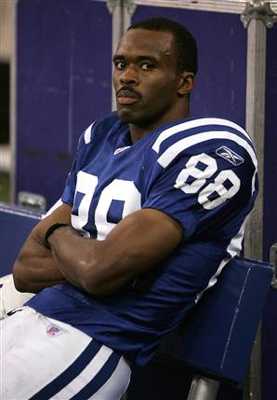
Witnessed Event: North Philadelphia Shooting
On April 29, 2008, a convicted drug dealer named Dwight Dixon got into an altercation with former NFL star Marvin Harrison, at a North Philadelphia car wash named Chuckie’s Garage. The two men had previously gotten into an argument when Harrison denied Dixon entry into a sports bar he owned and operated. On the day in question, Dixon and Harrison got into a fight outside the car wash. Someone pulled out a gun and started shooting. A collection of witnesses at the scene, including Dwight Dixon, said that it was Marvin Harrison who was firing with two separate weapons. Three people were injured in the gunfire. Dixon was shot in the left hand. A man named Robert Nixon was struck in his back and a child sitting in a nearby car suffered an eye injury from shattered glass.
Robert Nixon initially told police he knew nothing about what happened, but four days after the shooting he signed a statement saying he was positive that he saw Harrison with a gun in his hand at the time of the altercation. After an investigation, ballistics tests confirmed that five of the shell casings found at the crime scene had come from a high-powered Belgian handgun owned by Marvin Harrison. The gun was recovered from Harrison’s car wash.
After the story reached ESPN, Marvin Harrison’s personality was reported in a different light. For 12 NFL seasons, Marvin was one of most prolific wide receivers in the league. He was a true professional that rarely celebrated after any of his 128 touchdowns. Harrison stepped away from the game after the 2008 season.
In the spring of 2009, Dwight Dixon gave an interview to the ESPN program E:60, claiming that Harrison was the man that shot him. A few months later on July 21, 2009, Dwight Dixon was shot and killed in the Fairmount section of Philadelphia. A gunman approached the driver’s side of his Toyota Camry and fired four times through the back window and then fired three more times into the passenger side. Dwight Dixon was shot 7 times. Moments after the shooting, he told police that he believed the incident was related to the April 2008 assault. Dixon fell into a coma shortly after being shot and died a few months later. His murder remains unsolved.
In the summer of 2010, Marvin Harrison was pulled over by the police for traveling the wrong way down a one-way street. The officers claimed to have seen Harrison conceal a gun in the car. They searched his vehicle and found a 9mm weapon that was tested against three spent 9mm shell casings that were found inside the truck driven by the late Dwight Dixon at the scene of an April 2008 shooting. Since the discovery, the FBI has become involved in the investigation, with no recent news to report.
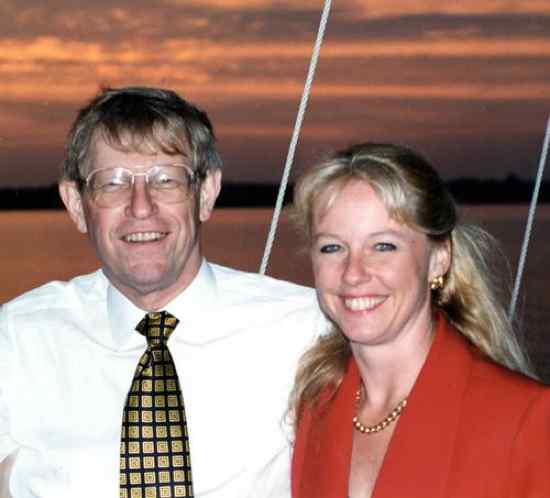
Witnessed Event: American Airlines Flight 77
Barbara Olson was a lawyer, author and conservative American television commentator. In 1994, she joined the United States House of Representatives, becoming chief investigative counsel for the House Government Reform and Oversight Committee. In that position, Olson led a number of different investigations into the Clinton administration. She exposed the White House travel office scandal and the FBI files controversy. Olson published a collection of books that examine the history of Hillary Clinton and the actions of Bill Clinton in the final days of his presidency. Some of her accusations include unlawful pardons by Bill Clinton, the looting of the White House and executive orders that were sheer abuses of presidential power. On January 20, 2001, Bill Clinton pardoned 140 people in the final hours of his presidency.
In 1996, Barbara Olson married a man named Ted Olson. Ted successfully represented presidential candidate George W. Bush in the Supreme Court case of Bush v. Gore, which effectively determined the final result of the contested 2000 Presidential election. He subsequently served as United States Solicitor General in the Bush administration. On September 11, 2001, Barbara Olson boarded American Airlines Flight 77 traveling from Virginia to Los Angeles. She was visiting Los Angeles for a taping of Politically Incorrect with Bill Maher.
On September 11, 2001, Flight 77 was hijacked at 8:54. Between 9:16 and 9:26, Olson called her husband. According to him, she reported that the flight had been hijacked, and that the hijackers had knives and box-cutters. A minute into the conversation, the call was cut off. Shortly after, Barbara reached her husband again. Ted Olson asked for her location and she replied that the plane was flying over houses. Ted informed Barbara of the two previous hijackings and crashes. She didn’t display signs of panic over the phone. American Airlines Flight 77 crashed into the western side of the Pentagon at 09:37 EDT. All 64 people on board were killed, including Barbara Olson. Following her death, Politically Incorrect host, Bill Maher, left a panel seat vacant for a week.
The two phone calls Barbara Olson made from Flight 77 are an important factor to the accepted story of 9/11. They provide evidence that American 77 had been aloft after it had disappeared from FAA radar around 9:00 AM. The calls are also the only source of the widely accepted idea that the hijackers had box cutters. The story has been scrutinized by a collection of researchers, who have accused Ted Olson of changing his account. He originally indicated that Barbara used a cell phone to call him, but later said she called using an airline phone. The technology to enable cell phone calls from high-altitude flights wasn’t developed until 2004.

Witnessed Event: U.S. Naval Intelligence Gathering
After graduating from high school, William Cooper joined the U.S. Air Force and later the U.S. Navy. He served in the Vietnam War and then worked for Naval Security and Intelligence. Cooper gained notoriety after publishing a book titled Behold a Pale Horse. The text documents various UFO and paranormal activities he encountered while serving for Naval Intelligence. It examines government corruption, secret societies, and a collection of conspiracy theories. In the 1990s, William Cooper became a popular speaker on the UFO lecture circuit. He was the host of a worldwide shortwave radio show named Hour of the Time.
William Cooper was the first person to provide evidence of explosive material inside the Murrah Building in Oklahoma City on April 19, 1995. He publicly identified the type of explosives used in the Oklahoma City bombing. In his early writings, Cooper was convinced that the United States was hiding evidence of alien technology. Towards the end of his life Cooper turned his attention towards covert government programs and the militia movement. He became an outspoken critic of U.S. government abuses. William Cooper felt that the UFO phenomenon was a misinformation campaign organized to hide secret military operations. He asserted that the Internal Revenue Service (IRS) is actually the same organization as the Bureau of Alcohol, Tobacco and Firearms. Cooper felt the two organizations were involved in a broad, premeditated conspiracy to defraud the Citizens of the United States of America.
William Cooper produced several documentaries covering subjects such as the John F. Kennedy assassination and government black projects. He felt that JFK was shot and killed by his driver, a man named William Greer. In the Zapruder film Greer can be seen turning towards Kennedy the moment before he receives the fatal head wound. Following the death of her husband, Jacqueline Kennedy was bitterly critical of William Greer’s performance. William Cooper suggested that Jacqueline was attempting to get away from William Greer when she famously jumped on the back of the vehicle following the assassination. In the Zapruder film, Greer’s recorded front to back movement is extremely abnormal. The tape shows evidence of possible tampering.
In June 2001, three months before 9/11, William Cooper warned publicly about an important terrorist attack on United States, that would be blamed on Osama Bin Laden. During his June 28 broadcast, William Cooper said “I’m telling you be prepared for a major attack. But it won’t be Osama Bin Laden. It will be those behind the New World Order.” On 9/11 Cooper said “what we’re witnessing today is most probably the herald of the, at least, the redefinition of freedom, and probably its death.”
William Cooper was charged with various crimes in his lifetime, including tax evasion from 1992 to 1994, and bank fraud for giving false information on a loan application. In July and September 2001, Cooper was accused of brandishing a handgun near his home in Eagar, Arizona. On November 6, 2001, two months after September 11, William Cooper was fatally shot by a large collection of Arizona deputies who were attempting to serve him an arrest warrant. According to police accounts, Cooper, who was physically disabled, fled officers and pulled out a weapon. A gun fight ensued and William Cooper was killed. A deputy was critically injured in the incident.
Witnessed Event: Collapse of the Twin Towers
Kenny Johannemann worked as a part-time janitor in the World Trade Center when it was attacked and destroyed on September 11, 2001. He was in the North Tower waiting for an elevator when the first explosion occurred. The blast created a fireball that engulfed the elevator shaft. Johannemann responded by saving the life of a man that was badly burned in the event. He was in a similar position as William Rodriguez, who was also a janitor in the WTC North Tower, and who became internationally recognized for his heroic efforts on September 11. Rodriguez was the last person to leave the collapsing North Tower alive.
Following the events of September 11, 2001, Kenneth Johannemann and William Rodriguez provided a detailed account of their experience. One aspect of their stories is similar, but contradicts the official report presented by the 9/11 commission. Both men reported that they heard loud explosions in the basement of the North Tower immediately before and after the plane impacted. Kenneth Johannemann was adamant about the fact that he heard explosions not associated with the crash. William Rodriguez also claimed to have heard a massive rumble in the basement of the North Tower, seconds before the plane hit.
On August 31, 2008, Kenneth Johannemann committed suicide by way of a gunshot wound to the head. Mr Johannemann’s suicide note stated that he was depressed after being evicted from his residence. The testimony given by Kenneth Johannemann and William Rodriguez are identical in the fact that they describe large explosions in the WTC towers. Before his death, Johannemann regularly told his story to public crowds. His death was a surprise to everyone and instantly raised suspicion amongst 9/11 researchers.
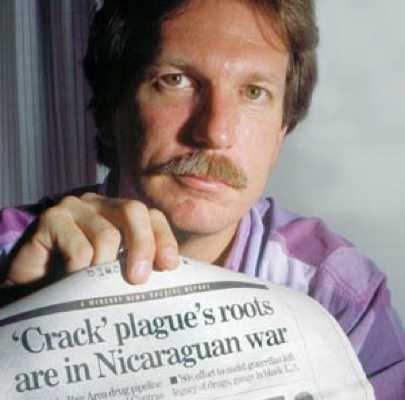
Witnessed Event: Research into the Cocaine Trade
Gary Webb was a Pulitzer prize-winning American investigative journalist. In August of 1996, the San Jose Mercury News published Webb’s Dark Alliance, a 20,000 word, three-part investigative series which alleged that Nicaraguan drug traffickers had sold and distributed crack cocaine in Los Angeles during the 1980s. Webb alleged that drug profits were used to fund the CIA-supported Nicaraguan Contras. He never asserted that the CIA directly aided drug dealers to raise money for the Contras, but he did document that the CIA was aware of the cocaine transactions and the large shipments of cocaine into the U.S. by the Contra personnel.
According to the Columbia Journalism Review, the Dark Alliance series became “the most talked-about piece of journalism in 1996, and arguably the most famous set of articles of the decade.” Webb supported his research with documents obtained through the Freedom of Information Act. He investigated Nicaraguans linked to the CIA-backed Contras who had allegedly smuggled cocaine into the U.S. Their product was distributed as crack cocaine in Los Angeles. Webb also alleged that this influx of Nicaraguan-supplied cocaine sparked, and significantly fueled, the widespread crack cocaine epidemic that swept through many U.S. cities during the 1980s. He charged that the Reagan administration shielded inner-city drug dealers from prosecution in order to raise money for the Contras.
Gary Webb’s research generated fierce controversy around the world, and the San Jose Mercury News backed away from the story, effectively ending Webb’s career as a mainstream media journalist. On December 10, 2004, Gary Webb was found dead from two gunshot wounds to the head. The Sacramento County coroner Robert Lyons asserted that it was suicide. He said that a suicide note was found at the scene, although Lyons was unable to explain how Webb could shoot himself twice in the head with a .38 caliber pistol. Since the publication of Dark Alliance, many of Gary Webb’s accusations have been validated. Journalist George Sanchez wrote that “the CIA’s internal investigation by Inspector General Frederick Hitz vindicated much of Gary’s reporting” and observed that, despite the campaign against Webb, “the government eventually admitted to more than Gary had initially reported.”
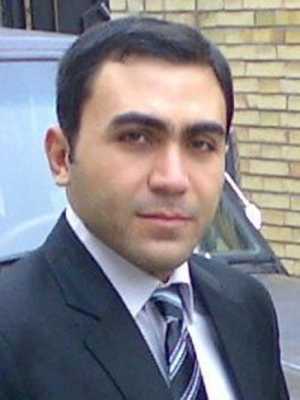
Witnessed Event: Misconduct at the Kahrizak Jail
Dr. Ramin Pourandarjani was an Iranian physician that worked at the Kahrizak detention center in southern Tehran. Following the 2009 Iranian election protests, Ramin Pourandarjani was made responsible for the medical care of several prisoners believed to have been tortured. One of his patients was Mohsen Ruholamini, a government scientist’s son, who was arrested following his participation in the post-election protests.
Mohsen Ruholamini, who was only 25-years-old, died in prison in July of 2009. His death certificate originally identified the cause of death as multiple blows to the head. A report given by the Iranian judicial authorities stated that Ruholamini died of “physical stress, the effects of being held in bad conditions, multiple blows and severe injuries to the body.”
Dr. Pourandarjani testified before a parliamentary committee investigating misconduct at the Kahrizak jail. The jail was subsequently closed by order of Ayatollah Khamenei. Presidential candidate and cleric, Mehdi Karroubi, publicly accused the Iranian police of having tortured and raped detainees in the prison. In response, the police raided Karroubi’s office, and confiscated names, addresses and testimonies of witnesses.
Following his testimony, Pourandarjani was one of the people arrested. He was interrogated by the Iranian police and released on bail. On November 10, 2009, at the age of 26, Ramin Pourandarjani died of poisoning from a salad laced with an overdose of blood pressure medication. Iranian authorities initially claimed Pourandarjani had died in a car accident, committed suicide, or died of a heart attack. They prohibited Pourandarjani’s family from performing an autopsy. The judiciary unit in Iran remains reluctant to investigate the sudden death of Dr. Ramin Pourandarjani.
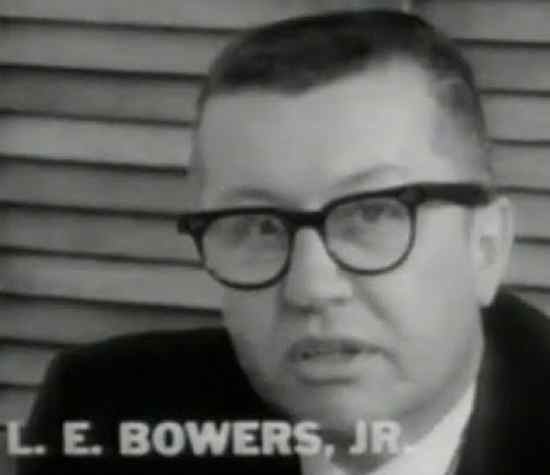
Witnessed Event: John F. Kennedy Assassination
Lee Bowers Jr. was a key witness to the assassination of John F. Kennedy. At the moment of the shooting he was operating the Union Terminal Company’s two-story interlocking tower, which was overlooking the parking lot just north of the grassy knoll and west of the Texas School Book Depository. Bowers had an unobstructed view of the stockade fence atop the knoll. He gave a detailed account of the assassination saying he had witnessed two unfamiliar men standing near the grassy knoll at the edge of the parking lot, within 10 or 15 feet of each other, “one man was middle-aged, fairly heavy-set, in a white shirt and dark trousers. The other was a younger man, about mid-twenties, in either a plaid shirt or a plaid coat or jacket.”
Lee Bowers also described a strange truck that was parked in the location of the assassination seven to ten minutes before Kennedy arrived. When the shots rang out, Bowers’ attention was drawn to the grassy knoll where he had witnessed the two men. He observed “some commotion” at that spot, “…something out of the ordinary, a sort of milling around…which attracted my eye for some reason, which I could not identify.” In an interview that Lee Bowers gave with attorney Mark Lane, he explained that the “commotion” that caught his eye may have been “a flash of light or smoke.”
Lee Bowers testified that immediately following the assassination a motorcycle policeman left the presidential motorcade and roared up the grassy knoll straight to where the two mysterious gentlemen were standing behind the fence. The policeman dismounted, but then climbed on his motorcycle and drove off. On the morning of August 9, 1966, Lee Bowers was driving south from Dallas on business. He was two miles from Midlothian when his brand new company car veered from the road and hit a bridge abutment. Bowers was killed in the accident. There was no autopsy performed and he was cremated soon afterward. A doctor from Midlothian, who rode in the ambulance with Bowers, noticed something peculiar about the victim. “He was in a strange state of shock. I’ve never seen anything like it.”
Witnessed Event: Collapse of the Twin Towers
On the morning of September 11, 2001, Barry Jennings, who was a housing authority official in New York City, was near the World Trade Center Towers when they were attacked. Following the incident Barry reported to the city’s command center, which was located on the 23rd floor of the 7 World Trade Center structure. After reaching the office, Jennings and a man named Michael Hess realized that the room was completely empty. In an interview taped for the Loose Change film series, Jennings discussed the moment. “There was steaming coffee and sandwiches on the tables. It seemed that the room had recently been vacated.”
After getting word to evacuate, Jennings and Hess started to move down the staircase of 7 WTC. When the pair reached the 6th floor they were hit by a large explosion. The stairs underneath the men gave way and they were forced to climb over rubble to reach the 8th floor. While on the 8th floor Barry Jennings reported the sound of multiple loud explosions from below. Jennings and Hess were eventually saved by a collection of New York City firefighters and taken to an area called the “lobby.” The area was completely obliterated. While traveling through the lobby, Barry Jennings commented on dead bodies.
“And the firefighter who took us down kept saying, “Do not look down.” I kept saying, “Why?” We were stepping over people. And you know when you can feel when you are stepping over people.”
At 5:21 on the evening of September 11, 2001, the 7 World Trade Center building suffered a complete failure. The official cause of the collapse was due to damage sustained when the nearby North Tower of the WTC collapsed. The debris ignited fires, which continued to burn throughout the afternoon. The building’s internal fire suppression system lacked water pressure to fight the fires, and the building collapsed. The destruction of 7 WTC is a controversial subject among conspiracy theorists. Along with the Twin Towers, 7 WTC was the first steel building to experience a complete failure due to fire. The structure didn’t crumble as you might expect from fire damage. Instead it fell in an absolute free-fall (about 8 seconds).
Barry Jennings finished his interview for Loose Change by saying “I’m just confused about one thing, why World Trade Center 7 went down in the first place – I’m very confused about that – I know what I heard, I heard explosions.” Barry Jennings challenged the official 9/11 report. He said that while in the building he heard multiple explosions and witnessed damage not caused by fire. For this reason, many people found the testimony of Jennings contradictory to the official story of what happened on 9/11. Barry Jennings died on August 19, 2008, from an unknown cause. He passed away only a couple days before a report was to be released by the National Institute of Standards and Technology’s (NIST) on the collapse of 7 WTC.
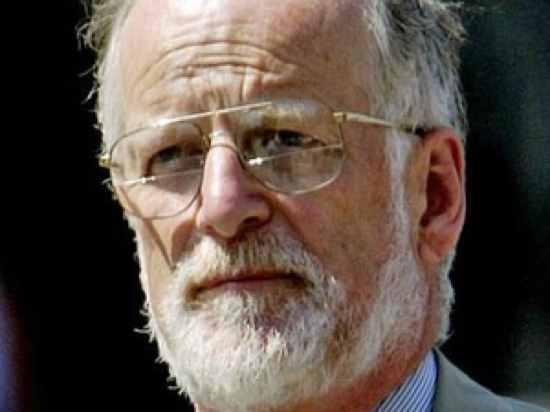
Witnessed Event: Biological Warfare Research in Iraq
David Kelly was a British scientist and expert on biological warfare. He was employed by the British Ministry of Defense, and served as a United Nations weapons inspector in Iraq. The Iraq War began on March 20, 2003. After the end of the initial ground attack, David Kelly was involved with a team attempting to find any trace of weapons of mass destruction in Iraq.
After analyzing photographs of two alleged mobile weapons laboratories in Iraq, Kelly was unhappy with the presented results. In response, he organized an interview with The Observer. On June 15, 2003, the newspaper published an article using Kelly as a confidential source. It said that “a British scientist and biological weapons expert who examined the trailers in Iraq said they are not mobile germ warfare laboratories. You could not use them for making biological weapons. They do not even look like them. They are exactly what the Iraqis said they were. Facilities for the production of hydrogen gas to fill balloons.”
On May 22, 2003, David Kelly met with Andrew Gilligan, a BBC journalist. A few weeks later, using information provided by Kelly, Gilligan published a series of articles about the British government’s dossier on weapons of mass destruction in Iraq. He said that the government had “sexed up” the military capabilities of Iraq in order to bolster the argument for going to war with the country. Gilligan quoted his source, David Kelly, as identifying Alastair Campbell, the former Prime Minister’s Director of Communications and Strategy, as being responsible for the suppressions. He suggested that the claim that Iraq was able to deploy biological weapons within 45 minutes was false.
On July 15, 2003, David Kelly was called before the parliamentary foreign affairs select committee. He was questioned aggressively about his actions. Two days later, on July 17, David Kelly went missing near his home in Oxfordshire. His body was discovered in area of woodlands known as Harrowdown Hill, about a mile away from his home. David Kelly had ingested up to 29 tablets of painkillers. He also slashed his left wrist with a knife. After an investigation, Kelly’s death was ruled a suicide. Since that time, a collection of medical experts have raised concerns over his cause of death.
Doctors have argued that the autopsy finding of a transected ulnar artery could not have caused a degree of blood loss that would kill someone, particularly when outside in the cold. In December 2010, The Times reported that Dr. Kelly had a rare abnormality in his arteries which could have contributed to his death. On December 5, 2009, six doctors began legal action to demand a formal inquest into the death of David Kelly, saying there was “insufficient evidence to prove beyond reasonable doubt he killed himself.” In January 2010, it was disclosed that Lord Hutton had requested that all files relating to his postmortem remain secret for 70 years. Hutton explained that he had done so to protect David Kelly’s wife and daughters from the distress of further media reports.
